认真学习社会学
WEEK1 摘要 【教科书Chp1】
- Sociological imagination
(定义见教科书) - social facts:Things that exist outside the individual and put constraints on behaviour.
Sociological theory:
(见下方)
- Structural Functionalism
- Conflict Theory
- Symbolic interactionism
-
anomie:When norms and values break down in society.
-
Solidarity: how people in a society are connected and guided by shared values, norms, and rules that help maintain social order.
-
Capitalism: A socio-economic system based on private ownership production, dependent on wage labor. Its sole purpose is profit-making.
Theory
定义
- Sociological theory:
Explanations about how society works; answers questions of why and how; often based on observed patterns.
• Can be applied to more than one situation
种类
- Micro-level theories: Explain interactional phenomena like person-to-person interactions
- Macro-level theories: Explanations about how institutions, economies, and societies work
特征
- Robust theories are supported by evidence, are testable, and are falsifiable (can be proven wrong)
Structural Functionalism
主要观点
• Human behaviour is governed by stable patterns of social relations and social structures.
• Focuses on norms, traditions, and institutions that bind people to society and maintain social order.
• Views society as having specific "working parts" that must work together for society to operate cohesively.
• Views society similar to the human body-when one organ stops functioning, the whole system breaks down.
• Individuals and groups carry out specific social functions to keep society going
【额外补充(来自阅读材料)
- Functionalists use the terms functional and dysfunctional to describe the effects of social elements on society. Elements of society are functional if they contribute to social stability and dysfunctional if they disrupt social stability.

社会学家们(每一个social theory 对应一个人)
-
Emile Durkheim
• French sociologist concerned with the relationship between individuals and social structures.
• Wanted sociology to be a science guided by analysis of * social facts:Things that exist outside the individual and put constraints on behaviour. *
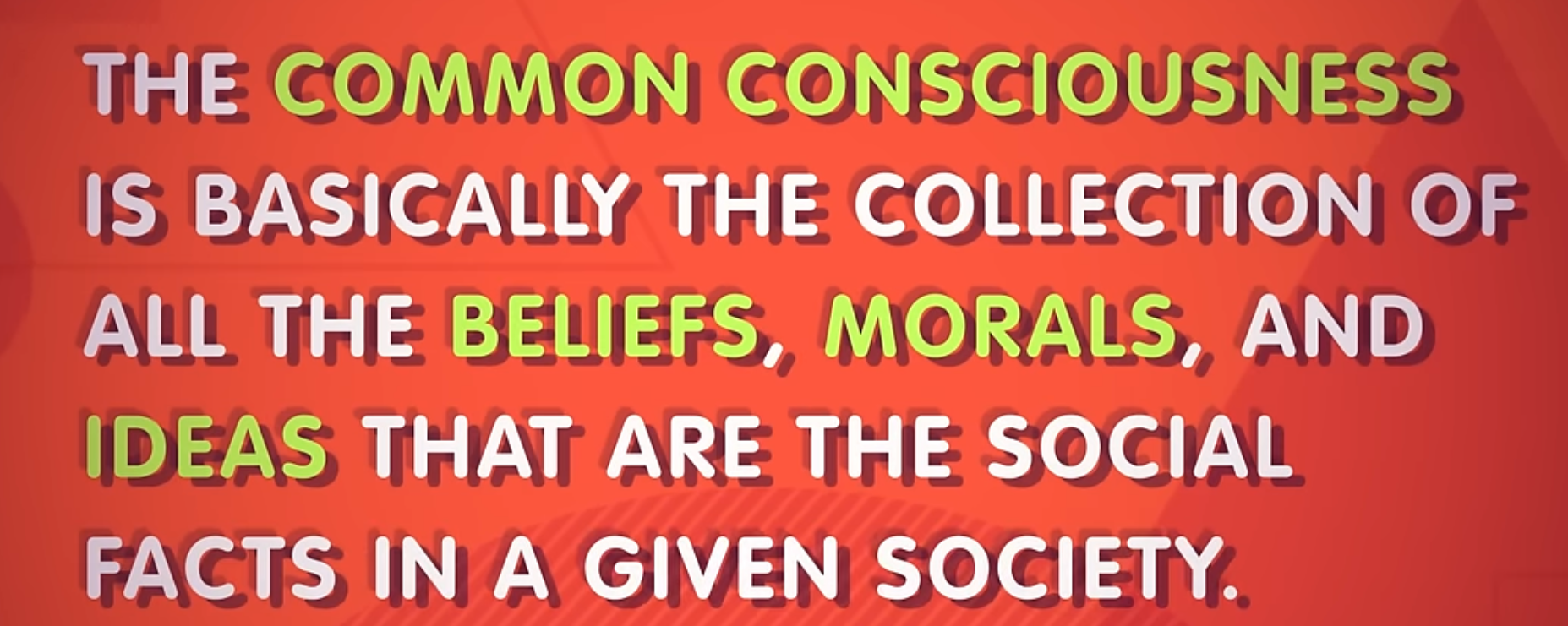
-
Durkheim found that those who were not socially integrated or connected to others by common values or social expectations were more likely to commit suicide (they were in a state of anomie)
Conflict Theory
- Emphasizes the centrality(中心性)of conflict and power struggles in social life.
-
4 main features:
- Focuses on large, macro-level social forces, such as "class relations"(阶级关系)
- Identifies patterns of inequality and their outcomes.
- Examines how domination and subordination play out as different groups struggle for resources
(•研究当不同群体争夺资源时,统治和从屬关系是如何发挥的) - Stresses how members of advantaged groups typically try to maintain their advantages while subordinate groups typically struggle to increase theirs
Karl Marx
-
Believed all societies throughout history were based on social conflict
• Key to understanding a society was to look at the economic
relationships in that society-how things are made and distributed
• Groups with different resources and interests always struggle -
Concerned with the dynamics of capitalism as an economic system.
• Capitalism: A socio-economic system based on private ownership production, dependent on wage labor. Its sole purpose is profit-making.
[Two classes: owner&worker
•Owners profit from the labor of proletariats
• Leads to alienation of workers from their labor] -
Theorized how human societies progress through social conflict, or through a struggle between classes with different interests
Symbolic Interactionism
- Focuses on interpersonal communication and interactions in micro-level social settings
- Emphasizes that social life is possible only because people attach meanings to things
- Stresses that people help create their social circumstances and do not merely react to them
- Focuses on the subjective meanings people create in small settings
三种Theory 总结

Max Weber
German sociologist; focused more on individuals than social structures.
- Like Durkheim, Weber understood sociology as a science, but not one like physics, which has universal laws.
- Unlike Marx and Durkheim, Weber said we need to look at individuals and the meanings they make of their behaviour
- Cultural values influence individual behaviour, which in turn shapes society
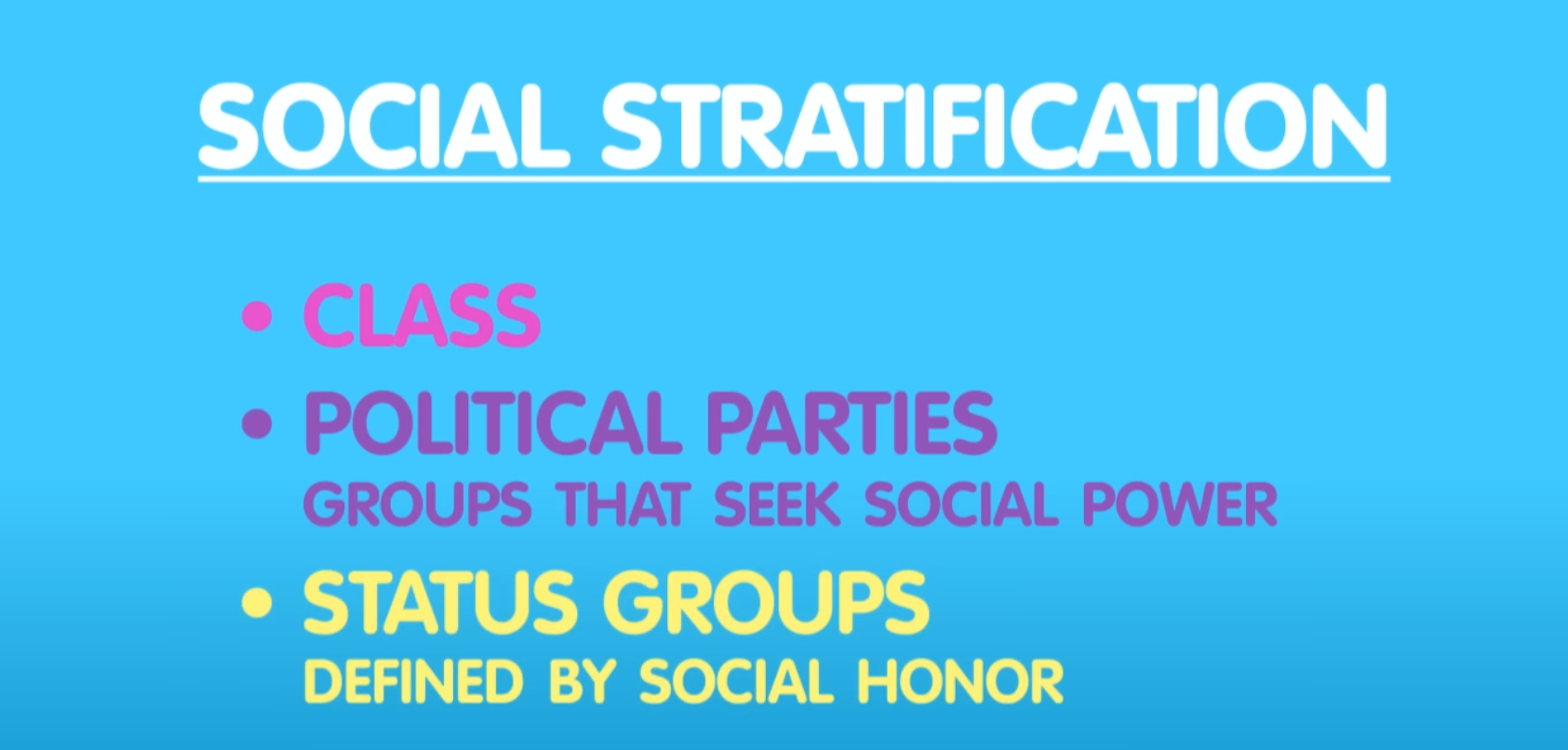
W.E.B. Du Bois
• Studied the lives of Black and white Americans after slavery and during the Jim Crow era.
• First sociologist to describe effects of structural racism.
【提出的理论】
• Double consciousness: fractured sense of identity among African Americans that derives from viewing oneself through the eyes of the white world.
• Colour line: represents the separation of Black and white people physically, economically, and emotionally.
• Psychological wage: symbolic rewards white people receive from a system that values whiteness.
Addams
• First woman to win the Nobel Peace Prize, American sociologist, activist, and founder of the field of social work.
• Pushed for a more socially-engaged scholarship in sociology.
• Funded the Hull House in Chicago
• A shelter for poor women
• Studied poverty and dependence
WEEK2 摘要【教科书Research Method】
Ethics in Social Science
• 特点:Informed consent【知情同意】, voluntary participation, confidentiality【保密】, avoidance of harm
• Sociologists often collect sensitive information
• Data could harm participants' reputations【声誉】 or expose them to legal action
Research Methods
方法的两种性质
-
Quantitative
•analysis based on numbers
•focuses on amounts/quantities and statistical relationships
-
Qualitative
•non-numerical; focuses on themes, processes, and meanings that cannot be quantified
•Can establish stories behind statistical findings
具体的实验方法
-
Experiment
• The experimenter controls the environment to isolate the effects of one variable(控制变量)
• The researcher randomly assigns subjects to control or exposure groups
• Always analyzed quantitatively
-
Strengths:
• Can establish cause and effect, which is almost impossible with other methods -
Weaknesses:
• Cannot ethically study some topics experimentally
• May not be sure if results would be the same in the "real world" outside the controlled environment
• In reality, people are never influenced by just one social factor at a time -
Natural Experiments
• Researchers also examine "natural experiments," which have some
characteristics of true experiments but not others
• There is a naturally occurring control and exposure group, but ones the researcher did not randomly assign.
-
Surveys
• Administer a set of pre-determined close-ended survey questions
• Analyzed quantitatively
-
Strengths:
• Can be fast and inexpensive
• Can be done online, by phone, in person, or by mail
• Can get lots of data from many people
• In more expensive and complex sampling designs, results can be representative of an entire population
• Can use survey data other people have gathered to answer new questions
• Can be confidential to improve honest reporting -
Weaknesses:
• Response rates may be low
• Slight differences in wording or question order can affect responses
• Stigma may reduce honest answers -
Participant Observation
• The researcher directly observes and participates in the social world they study
• Usually qualitative
-
Strengths:
• Can gather detailed information about how people act in particular contexts and understand the world "from the inside"
• Can observe how people behave in the setting researchers want to study, rather than asking about those behaviours outside of that setting -
Weaknesses:
• Can be time consuming and expensive
• Can study only a small number of people
• Results may not be replicable
• May be difficult to establish trust with people being studied -
Qualitative Interviews
• Researchers ask open-ended questions to analyze complex themes that cannot be quantified
• May be used with participant observation or done separately
-
Strengths:
• Can investigate complex themes impossible to document with other methods
• Can ask participants follow-up questions
• Uses the words of people themselves to understand a topic -
Weaknesses:
• Not typically empirically generalizable
• May be difficult to replicate
• Question wording and rapport (relationship) with researcher can affect responses
• Smaller sample sizes -
Historical and Content Analysis
• Use existing sources (historical records, newspaper stories, TV shows, transcripts of political testimony, music lyrics, etc.)
• Typically qualitative but may also be quantitative
-
Strengths:
• Can study phenomena that might not be evident with other data
• Can investigate cultural patterns not otherwise observable
• Can study issues in the past through historical records -
Weaknesses:
• Cannot control quality of data
• Are limited to data that exists, which means that researchers cannot examine certain topics or questions -
Other Existing Data
• Similar to content and historical analysis, researchers can analyze much other existing data:
• Crime rates, Census data, provincial health statistics, information about consumers and the economy, educational outcomes, measures of pollution, etc.
• Data were typically gathered for other purposes
• Depending on the data, researchers can analyze it quantitatively or qualitatively
- Strengths:
• Can answer questions not possible using different sources of data - Weaknesses:
• Data quality is dependent upon whoever originally gathered the data
Research Steps
Research projects generally follow 5 steps:
- determine your research question
- state your hypotheses
• Hypothesis testing is not always necessary, particularly in qualitative research - gather data
- analyze data
- develop conclusions
Most research begins with reviewing prior research on the topic to ensure you research something new
Variables
-
Variables: Observable characteristics that can have more than one possible answer or value
-
Determined by your unit of analysis: about what you want to collect data
• Individuals, nations, organizations, provinces, etc. -
Independent variable (X)
• Causes a change in the dependent variable (Y) -
Dependent variable (Y)
• Affected by the independent variable
• Y is the variable we try to explain -
Example: social isolation (X) predicts feelings of loneliness (Y)
WEEK3
ONE SLIDE ONE NOTE
Main Topic
-
MID-TERM Sep 26
• Syllabus has more information
• Practice Respondus Lockdown Browser on your device this week using links in the syllabus
Come to class with a fully charged device that has Respondus installed -
VIDEO(IN EXAM)
-
[FAKE NEWS VIDEO]
DISINFORMATION(错误 MISINFORMATION(缺失
Why hate benefit platform, have higher clicks
Solution: fact checking
platform->do more
government->force platform it did mire
more resource: Hygiene: the people would do fact check
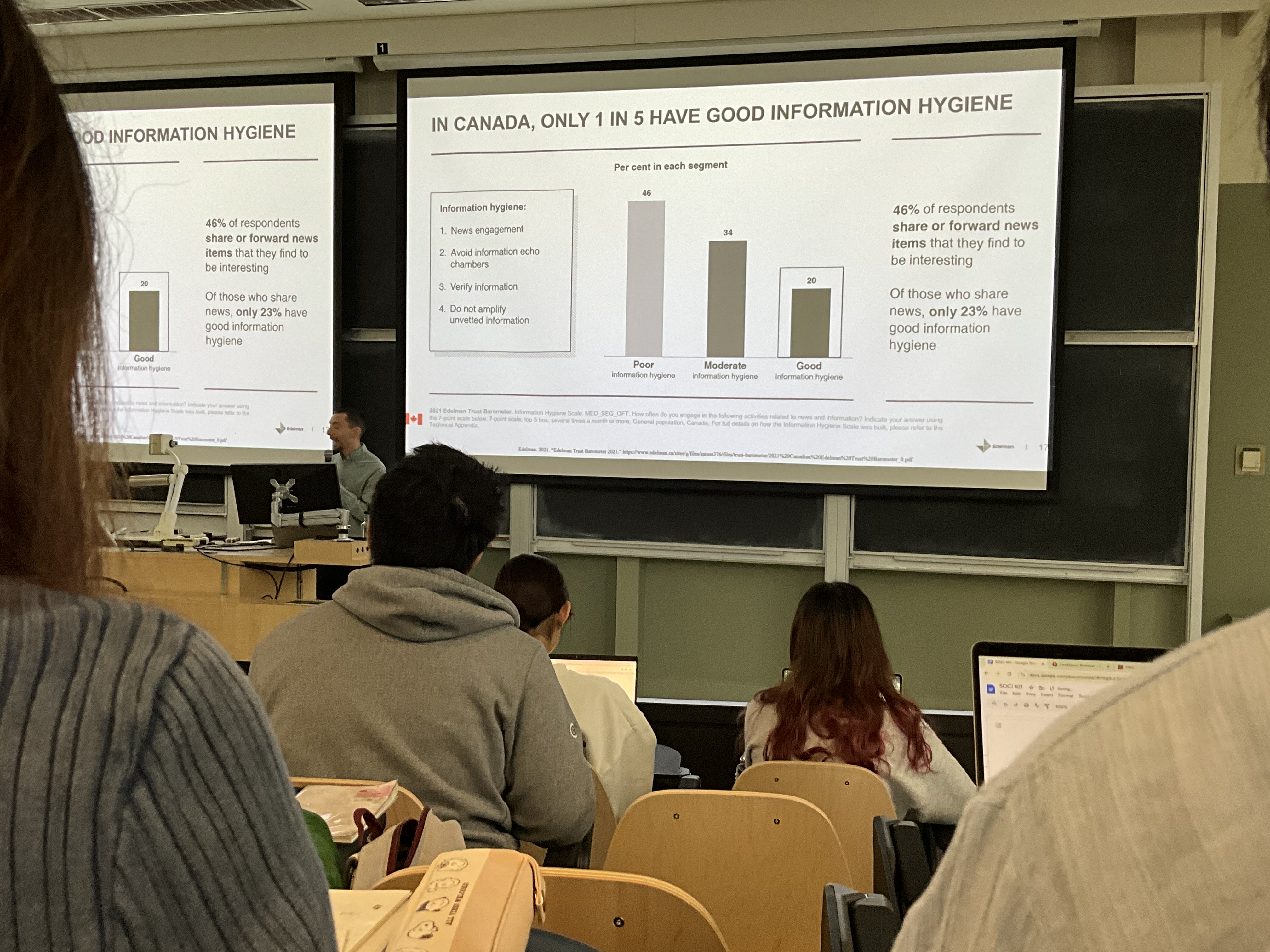
-
被操纵的媒体的危害
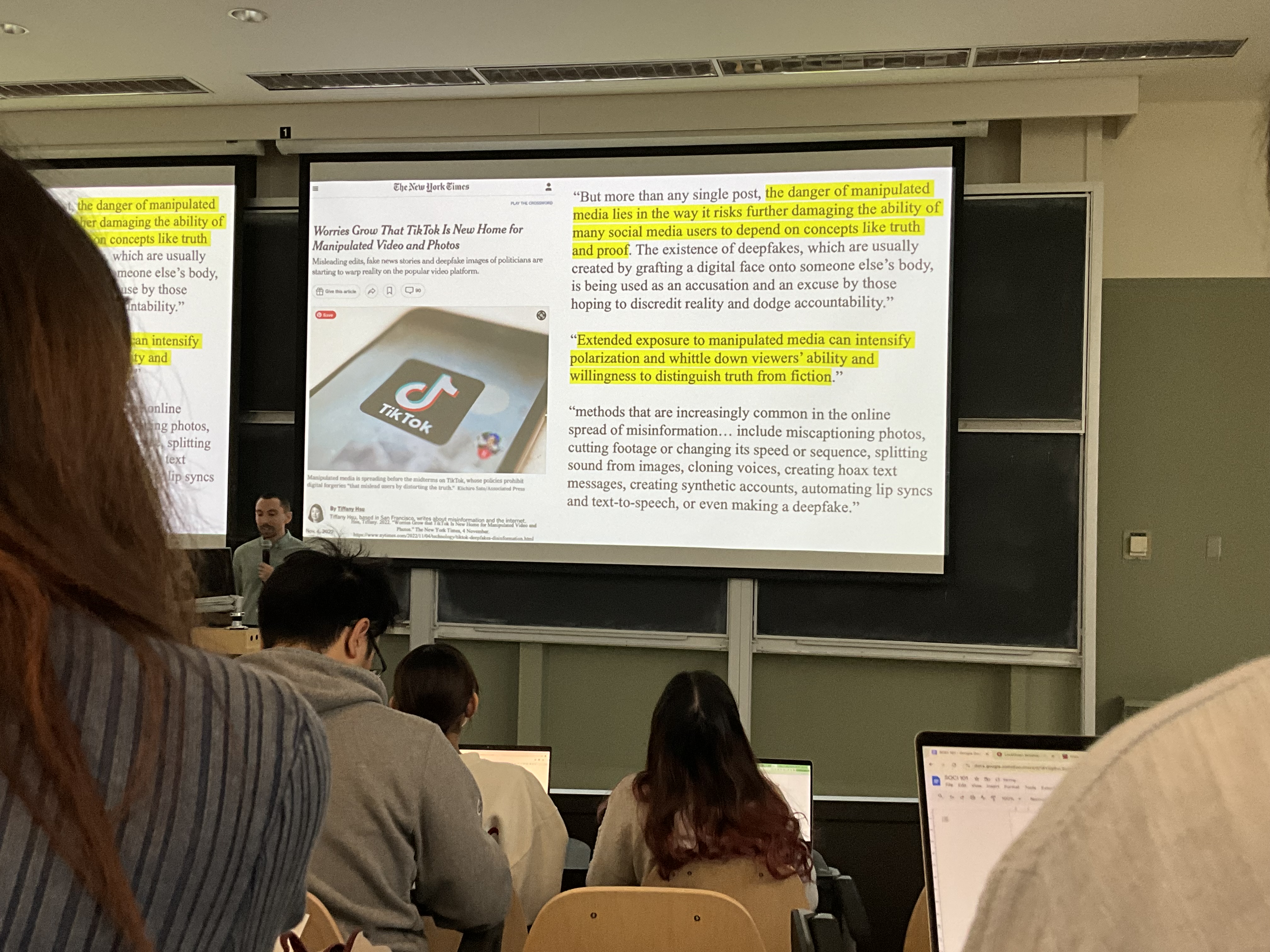
the danger of manipulated media lies in the way it risks further damaging the ability of many social media users to depend on concepts like truth and proof. "Extended exposure to manipulated media can intensify polarization and whittle down viewers' ability and willingness to distinguish truth from fiction."
-
[emotion language video]
scapegoating by truth lab
[还有好多video 听不懂,课后回放】
课本也要看 -
Learning goals
Learning Goals
• In this unit we learned about:
• Six main types of sociological research methods
• Key concepts of research, including variables, units of analysis, operationalization, populations, samples, correlations, spurious relationships, reliability, validity, misinformation, and disinformation
Next Unit
-
Learning Goals
Understand foundational sociological concepts:
• Social structure:
• Networks, status, roles, groups, and institutions
• Socialization
• Social interaction:
• Dramaturgy
• Emotion management
• How contemporary issues such as social media affect social interaction
-
The social structure
Social structure: The set of social statuses, roles, groups, networks, and institutions that organize and influence the way people live.
-
Resources and Rules
• Within social structures, individuals have different resources and behave according to rules.
• Resources: things individuals have or can acquire to accomplish goals
• Money, education, status, knowledge
• Access to resources shapes one's place in the social structure, as well as life chances: opportunities to provide oneself with material goods and positive living conditions.
• Rules: the formal and informal expectations for behaving in any given situation
• Formal: laws, organizational policies
• Informal: norms for interaction in workplaces
-
Status and Roles
• Statuses and roles have social meanings and come with expectations.
• Status: a person's or group's positions in society.
• Ascribed status: involuntary.
• Age, perceived racial identity
• Place individuals in social hierarchies, influence the resources available to individuals.
• Achieved status: a voluntary status; usually chosen. A result of efforts or intentions.
• College student, athlete, mayor
Role: the set of expectations for people who occupy a particular social status.
• Baristas are expected to be friendly, quick, and knowledgeable about coffee.
• Role strain: when one role requires too much (a stressful job)
example: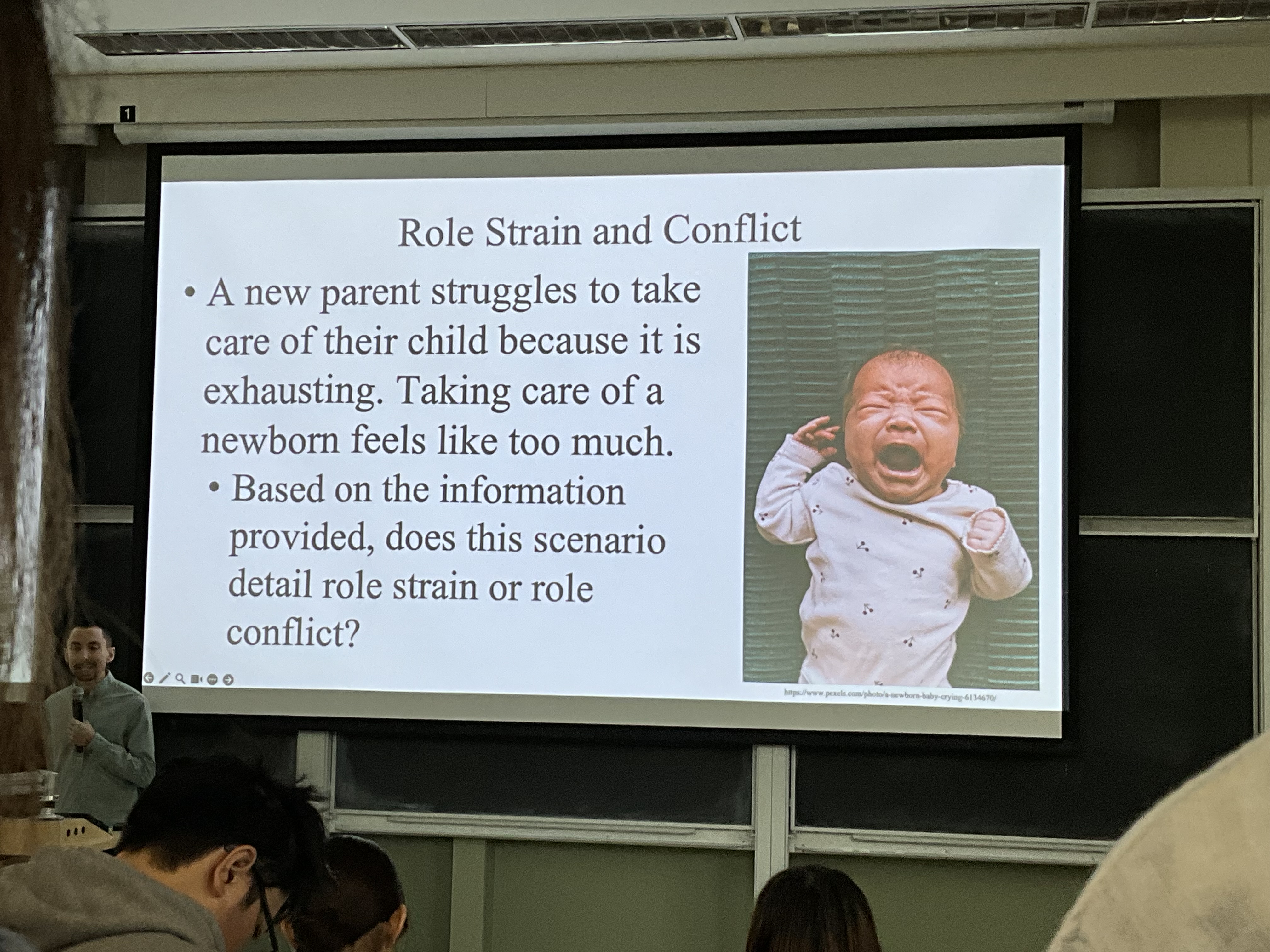
• Role conflict: when multiple roles contradict one another (working and being a student)
example: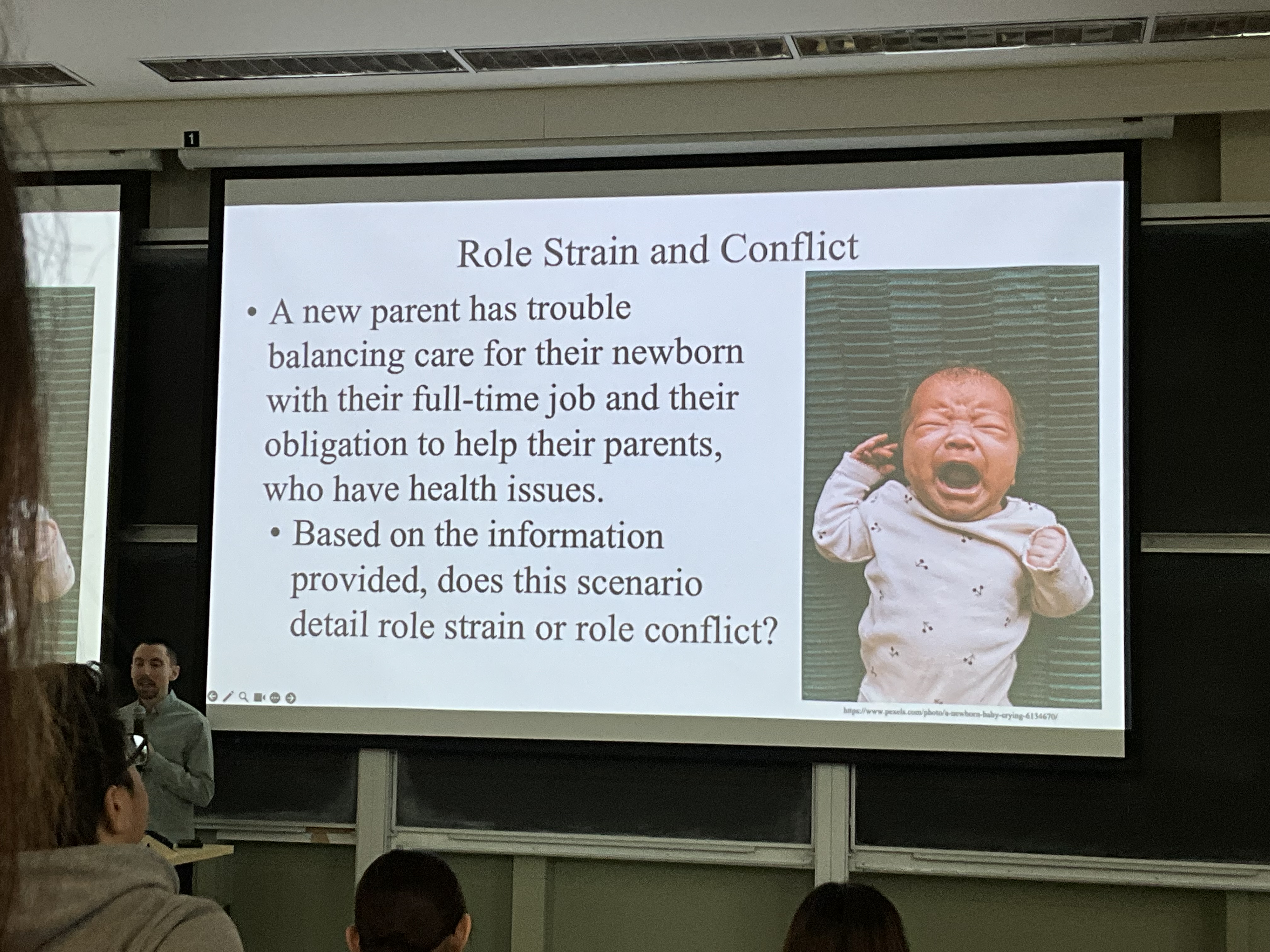
-
Social Networks
• Network: Series of social relationships that link a person directly to other individuals and indirectly to even more people.
• Student organizations, workplaces, family, friend groups
• Networks shape access to resources and opportunities
• For instance, it is difficult to break into politics if you lack relevant social Social Networks
• Even "weak" ties (friends of friends, parents' business partners, etc.) can yield opportunities because they connect people in different network clusters as well as the resources associated with them
• Norms, values, and even emotions are also shaped by networks
Economic Value of Networks
• Children from low-income families who have friends from high-income families on average make more money in adulthood than children who did not have such friendships
-
Social Groups
• Social groups: Two or more people with similar values and expectations who interact with one another on a regular basis.[多于1人
• Social groups reinforce(增强) individuals' identities, values, and connectedness to others, and may provide access to
resources
• Groups may also affect behaviour ("peer pressure")
• Groups are part of social networks
Group种类
-
Primary groups:【亲密的】
• Members are not interchangeable
• Relationships are enduring
• Relationships are often close, personal, and meaningful
• Family members, romantic -
Secondary groups:【出于目的】
• Impersonal
• Goal-oriented: they exist for a purpose
• May be temporary
• May have organized structures, rules, and authority figures
• Coworkers, classmates(亲密的同学也可以是primary group) -
Institutions
• Institutions: central domains of social life that guide behaviours and meet basic social needs
• Education, religion, media, government, family
• Shape individual and group behaviours
• Institutions can both establish social order and perpetuate inequalities
• Exist beyond the individual, but can also change over time
• Involve roles, statuses, networks, and groups
• Institutions are most visible when they break down(ex疫情期间)
group和机构的关系
• Groups and networks can exist within institutions
ex:Our class (a secondary group) exists within the institution of UBC
• Groups and networks can also exist across institutions
ex:Among a group of three close friends, one may go to church, one may attend a synagogue, and another may not attend any religious institution
Family 和机构
"Family" as an institution does not refer to any specific families.【此处的family是一个集体名词,并非指一个特定的家庭(group)
• Specific families are examples of groups.
• "Family" at the macro/structural level is a type of social arrangement.
• Institutions are usually examined at the o, macro/structural level.


